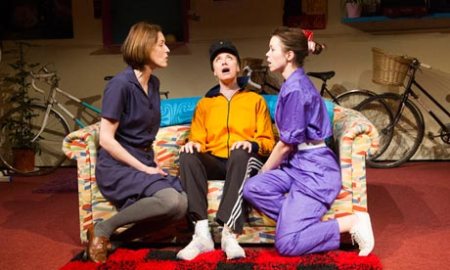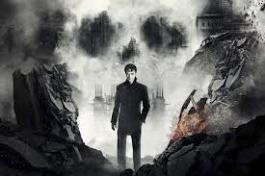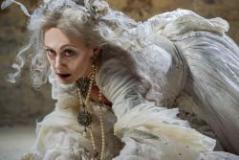There’s nothing earth-shatteringly inventive or innovative about Amelia Bullmore’s tale of three women’s decade straddling friendship, but Di and Viv and Rose has more impact that most po-faced Plays With A Message. Absorbing and compelling, it fulfills the ultimate critical cliché of being snortingly funny (I confess to finding the more risqué lines especially funny imaging what the post-60 crowd – the vast majority of the audience – made of it) and mascara-troublingly sad. It was so moving in fact, that I struggled to gain my composure even as the lights came up.
Female friendship has been explored in books, films and plays before, although not as often, truthfully or as warmly as such a rich subject matter should demand. I was struck as I watched this how little I’ve seen honest, realistic portrayals of women, particularly on stage. There are even fewer with no agenda. Bullmore doesn’t ask us to judge her characters or force a theatrical lesson down our throats, we’re simply asked to laugh and cry along with these three young women whose friendship begins in the cold corridors of a university halls of residence in the 1980s and survives into the 21st century, conquering childbirth, an ocean, rape and heartbreak.
Di (Tamsin Outhwaite) is a straight-talking term-time lesbian (we never do learn whether she eventually comes out to her mum, but it’s not important) who brings bubbly sex-mad Rose and uptight bookish Viv together in their first year at university. The three mismatched friends go on to share a house where they eat food from wobbly bowls and drink-dance to Prince (the soundtrack is fantastic). But it’s not all warm and cosy; there’s a huge change of pace and tone as horrific real-life events force there way (literally) into the girls’ carefree world. The actors respond brilliantly to the jarring turn, absorbing the effect the events have on their characters without being mawkish or overly-dramatic.
All three actors were fantastic, I particularly warmed to Anna Marie Maxwell’s Rose whose posh frivolousness could have been deeply irritating but who Maxwell instilled with a hugely likable naivety and warmth. A lot is demanded of Outhwaite’s Di and the former EastEnders actress more than delivered; Di is no one dimensional ‘tough girl’, Outhwaite plays her with the right dose of vulnerability, self-belief and self-awareness. Gina McKee’s quietly ambitious Viv is an introvert with a steely confidence, you might not immediately warm to her but McKee’s natural gentleness will win you over (also, I LOVED her ‘war’ wardrobe, it was also a great way of moving the play away from being too much of an 80s period piece).
Di and Viv and Rose has finished its run at Hampstead Theatre, but I’ll bet you a Prince CD that it won’t be long before it makes it to the West End.
by Suzanne Elliott





